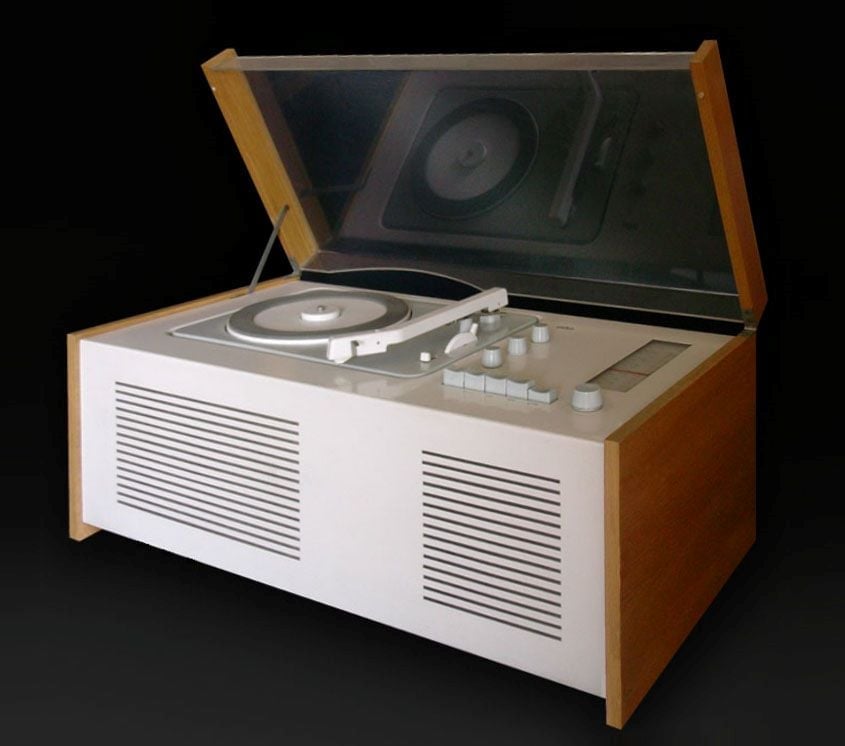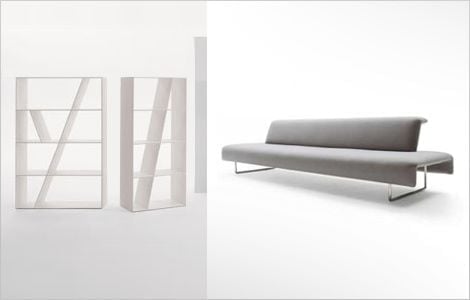A design philosophy can feel like the fashion equivalent of the turtleneck. Yes, that anomaly that not even Steve Jobs could sell. The turtleneck carries the weight of a brooding, misunderstood artist, adored by fashionistas for its retro chic appeal, yet dismissed by the rest as the sartorial equivalent of a deep groan.

You often encounter these earnest philosophies and lofty statements of purpose scattered across company websites, unused and unloved by most.
Apologies for the somewhat negative start, but it’s an elephant that’s difficult to hide. I’ll make up for it by showing you how valuable a design philosophy is and why you need one. And fear not, turtlenecks won’t be in your vicinity anytime soon.
Editor’s note: This blog was updated 4 June 2025 by Oscar Jite-Orimiono to provide additional context into what a design philosophy is, including how it differs design principles, why you need one, and FAQs.
A design philosophy is a set of high-level beliefs or values that guide how something is designed, directly influencing its aesthetics, functionality, and purpose. It affects the designer’s decision-making process and helps them create consistent designs that align with their vision and meet users’ needs.
When I first embarked on my design career, the concept of design philosophy struck me as an esoteric notion and remained a little abstract. As a junior designer, enamored as I was with the celebrated product and design philosophies of Apple, Sony, and many design gurus such as Dieter Rams, the idea of creating a concrete design philosophy seemed like an exercise relegated to a far distant future.
In my time, Dieter Rams was the god to emulate. According to Dieter, good design should be “honest,” “long-lasting,” and “make a product useful,” among other things. Every documentary and design book wheeled out his commandments, and I bent it awkwardly to suit my design work.
Yet things changed: aesthetics, modes of expression, and ways of interacting. As I developed and gained more responsibility as a senior designer, I realized the need to adapt and expand Dieter Rams’ vision to suit my changing design circumstances:

I now take inspiration from many design philosophies, like IBM’s Design Philosophy and Spotify’s New Design Principles, and these have inspired design philosophies I’ve created for products and design teams over the years. Most of them became embedded in our design process and the best ones helped bring coherence that l was lacking before.
A design philosophy also has an added benefit of enabling you to give an elevator pitch to articulate what the design team is really about.
Before delving into the complexities of a philosophy, it’s crucial to clarify the distinction between a design philosophy and design principles, two terms people often use interchangeably.
A design philosophy serves as a guiding light for a designer’s approach to their craft. It’s a high-level set of beliefs that dictates their decision-making processes, influencing their priorities, and problem-solving approaches.
Design principles, on the other hand, are actionable rules that stem from this overarching philosophy. They’re like the rules of engagement for any design challenge, providing practical guidance that ensures every step aligns with the designer’s core beliefs, or at least what they want to believe in until the next design crisis hits.
Spotify’s New Design Principles, which I mentioned earlier, are an interesting case. They’re called “principles,” but if you look at them more closely, they’re really just high-level statements.
Philosophy is the study of the nature of knowledge, reality, existence, and the meaning of life, and design philosophy is no different.
As a modern designer, you may not craft meticulous arguments like Aristotle and Plato, but common threads still weave through various philosophical traditions. Here are some key aspects of a strong design philosophy:
By defining your product principles, you establish a set of expectations that customers can expect, reducing the likelihood of miscommunication and fostering mutual understanding.
A distinct design philosophy can give you a competitive advantage in a crowded field, where products often blur into each other. It can also add to your brand identity, making you stand out and attract customers who respond to your values.
For example:
A clear product philosophy guides your product development decisions. To this end, a design philosophy:

Design philosophy is often associated with big organizations like Google and Apple, or Spotify and IBM mentioned earlier. However, having a personal design philosophy is just as important.
Personal and team design philosophies share the same foundation and aspects. They both establish guiding principles that inform design decisions, ensure consistency and reflect values, and can also evolve with time.
If, for example, you’re in an interview for a design role and you present your portfolio and the hiring manager asks: “What is your design philosophy?” or “What guides your design decisions?” Having a personal philosophy will help you answer clearly.
On the other hand, a team design philosophy isn’t as fluid. It involves a more collaborative effort and, oftentimes, must align with the overall goals of the company and not just the design team. Sometimes it works and is well-received, other times it falls flat — just ask Jaguar Land Rover.
Developing a strong design philosophy is essential. To help you get started, here’s a roadmap to help you develop your own design philosophy:
The first step involves asking yourself:
You probably have an idea but haven’t formalized them yet. Write words and phrases down to begin with. Highlight the ones you find important.
Here, try thinking about:
Basically, how will your designs contribute to the betterment of humanity, or at least make the world feel slightly less chaotic than it already is?
Translate your core values and design goals into actionable guidelines that you can apply throughout the design process. Be prepared to revise these principles as often as necessary.
A design philosophy isn’t a static entity; it should develop as you grow as a designer and as the world around you changes. At some stage, you may come to terms with the fact that your designs may not be as important or impactful as you once thought they were.
Japanese industrial designer Naoto Fukasawa is someone I admire for his work and outlook on life. He has created a unique approach to design. His “without thought” philosophy revolves around the simplicity of everyday living.
In an interview with Dwell, he explains that ‘‘People shouldn’t really have to think about an object when they are using it. Not having to think about it makes the relationship between a person and an object run more smoothly. Finding ideas in people’s spontaneous behavior and realizing these ideas in design is what without thought is about.”
Designing excessively exciting or novel designs might upset the balance between humans and nature, further disrupting the ecosystem:

Fukasawa developed his philosophy through an examination of the rituals and mundane interactions of daily existence.
He recognized that the seamless integration of design into human actions was the ultimate design goal: “Designers often want to make something special, something that really grabs people’s attention. But I realized that when we actually use these products, whether or not they are special is not that important. So I decided it would be a good idea to look at people’s subconscious behavior instead, or, as I call this principle, ‘design dissolving in behavior.’ I realized then that design has to achieve an object ‘without thought.’”
Fukasawa’s clarity of vision is an inspiration and is something to emulate.
Once you’ve developed your philosophy, it’s time to weave it into the fabric of your daily design practice. Here are a few ways to incorporate your design philosophy into your daily practice:
Whenever you make a design decision, consider whether it’s consistent with your beliefs and design goals. Would a design that prioritizes aesthetics above usability be consistent with your concept of creating beautiful and functional designs? Would a design that uses dark patterns to control user behavior be consistent with your idea of developing ethical, user-centered designs?
Get your team on board early so they understand your vision and the work that’s being produced. When the team agrees about the values and goals that guide your design work, it’ll lead to higher-quality design.
Pin the tenets of the philosophy to the whiteboard or online board wherever you’re brainstorming. What fresh ideas and innovative solutions can you and your team create that are aligned with your core values and design goals?
When you’re presenting your work to your team, clients, or stakeholders, use your design philosophy to frame your discussion. Explain how your design decisions were informed by your values and goals, and how they contribute to the overall success of the project.
So you have your newly minted design philosophy, but where do you start? Communicating your design philosophy to your team, stakeholders, and the broader design community is crucial for creating a shared understanding of your design approach. There are a few strategies to help you communicate your philosophy and get it noticed:
A manifesto serves as a concise and interesting expression of your design philosophy. It should capture the essence of your beliefs and values, outlining the principles that guide your design decisions. Put it on your website, style guide, and wherever you think people will see it.
Storytelling is a powerful tool for connecting with others and making your philosophy relatable. Use anecdotes, case studies, and personal experiences to illustrate how your philosophy has influenced your design work and the impact it has had.
Apply your philosophy to your daily design routine. Your team and stakeholders will hopefully see the consistency in your approach. When starting a new design project, state your philosophy upfront, and create case studies from it. Link them to specific parts of your project.
When faced with design decisions, consciously consider how they align with your philosophy. This will help you make choices that are consistent with your core values.
When it comes to design philosophies, these tend to be the most asked questions:
A design philosophy is a set of beliefs or values that guides how an individual or team approaches design.
Individual designers, design teams, and organizations all benefit from having a strong design philosophy.
A design philosophy should include your core values, design goals, and design principles.
Naoto Fukasawa’s “without thought” philosophy, which focuses on designing objects that integrate seamlessly into human behavior is an example of a good design philosophy.
Define your core values, identify your design goals, develop actionable design principles, share your philosophy through clear communication and apply it consistently in daily practice.
A design philosophy is essential for any designer who wishes to develop functional, emotional, and ethical products and services, allowing them to stand out in a competitive sector. Defining your values provides a clear perspective for your work, ensuring that your designs have a good impact on the world.
LogRocket's Galileo AI watches sessions and understands user feedback for you, automating the most time-intensive parts of your job and giving you more time to focus on great design.
See how design choices, interactions, and issues affect your users — get a demo of LogRocket today.

Small actions can have large consequences in complex systems. Here’s how UX designers can manage dependencies so users feel informed and in control rather than blocked or blindsided.

This article examines when hero sections are necessary in digital products, when they create friction, and how to evaluate them using UX goals, primary actions, user flow impact, and real-world alternatives.

AI speeds up tasks like research synthesis, ideation, and first-draft wireframes, but it can’t replace clarity, taste, or decision-making. Here’s a grounded look at what AI actually does well in UX right now.

Discover how to craft UX-friendly hero sections with examples, design tips, and strategies that drive engagement and conversion.